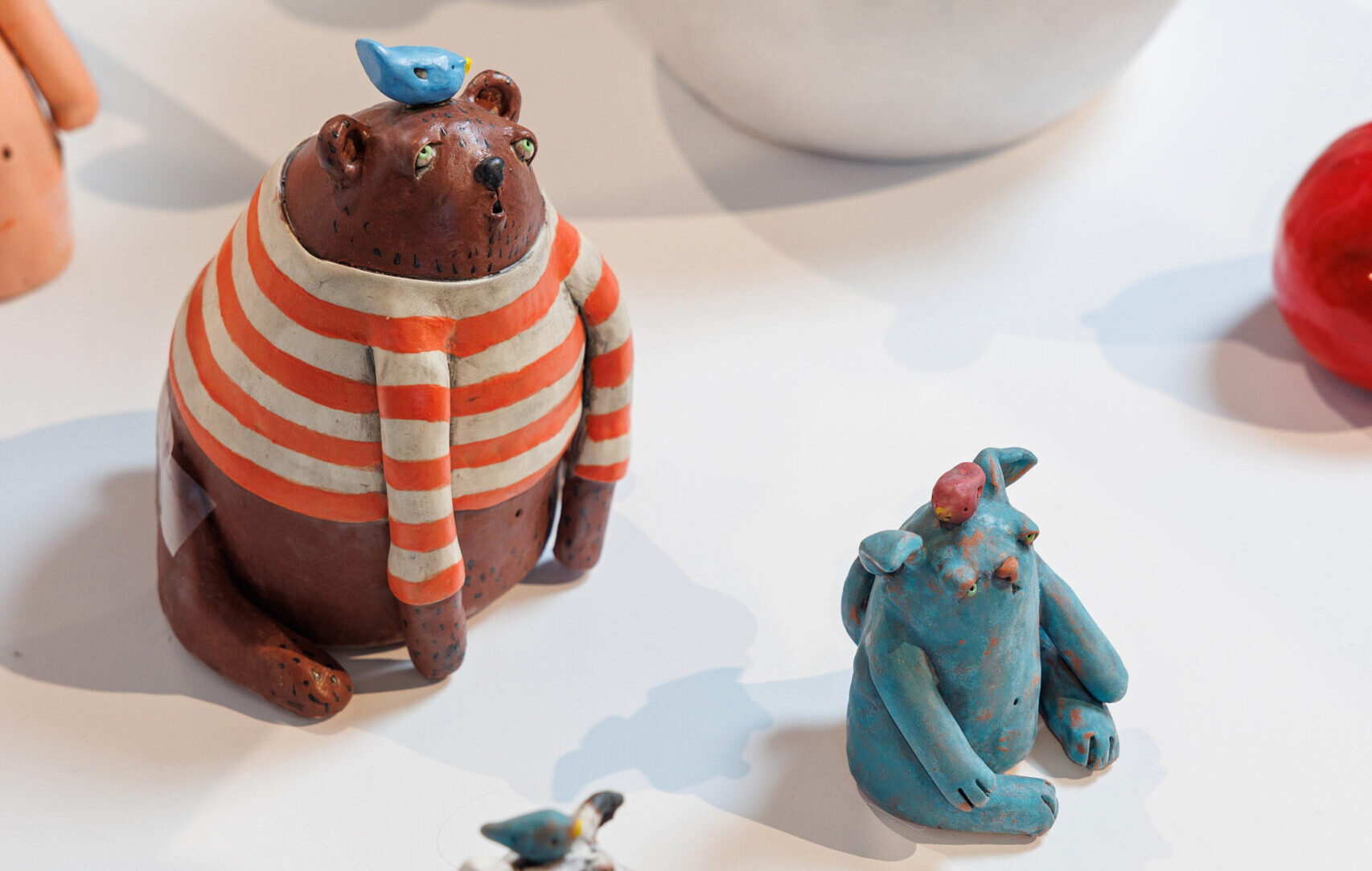
With rare artworks and curated finds, museum stores offer an antidote to commercialized shopping
LeAnn Russo has befriended many artists during her 19 years at the LSU Museum Store. But she’ll never forget the time one of them showed up unannounced at the shop’s back door.
There was George Rodrigue, lugging two containers of posters. The museum was in the midst of a 2011 exhibit dedicated to the artist, who was famous for his paintings of a cobalt-blue, yellow-eyed dog towering over Louisiana landscapes. The store had been selling his books and posters like there was no tomorrow, Russo recalls.
“I made you another poster, LeAnn,” Rodrigue told her that day.
|
|
“He had them printed and brought them himself,” she says. “It was amazing. I didn’t know he was going to do that. We still sell them in the store. … He just was absolutely wonderful.”
Today, the shop has a wall dedicated to authentic prints of the late artist’s work. It’s the kind of regional rarity that makes museum stores so special, Russo says.

Sure, there are postcards and bookmarks here. But there’s so much more.
St. Gabriel sculptor Denise Greenwood Loveless’ whimsical, pastel critters seem to peer at shoppers. Earthy, speckled vases and bowls by New Orleans ceramicist Therese Knowles are sprawled across another display. Glass cases house delicately crafted jewelry, a category of wearable art The New York Times says has become an important part of museum stores’ retail models.
There are graphic T-shirts, patterned scarves, kids’ toys and coffee table books. The store has 1,000 to 1,500 SKUs in its system on a given day.
Museums have been selling souvenirs for centuries, but the modern museum shop model took hold around the 1980s, according to Artsy. That’s when institutions began to move beyond magnets and mugs, stocking shelves with artisan and avante-garde goods as carefully curated as their exhibits.

Today, social media and e-commerce have broadened audiences. The Museum of Modern Art’s Design Store boasts nearly 300,000 Instagram followers. Crowds pile into its six bricks-and-mortar locations, meandering through the aisles of Eames chairs, rainbow-colored glassware and pleated tote bags. It’s a rare chance for an IRL glimpse at covetable goods spotted on the museum’s feed.
More than 2,100 museum stores take part in Museum Store Sunday, a national shopping event the Sunday after Black Friday.
In the Capital Region, most museums and galleries have gift shops, from Baton Rouge Gallery to Louisiana’s Old State Capitol to the USS KIDD Veterans Museum. These stores support nonprofit programming, and the rotating selection of items often revolves around seasonal exhibits and events.

In fact, all that Louisiana Art & Science Museum Store & Membership Manager Paula Taylor could think about this summer was the “Discoveries on the Nile” exhibit opening Oct. 1.
She imported a range of special Egyptian finds: customizable cartouche necklaces, handblown glass ornaments and carafes, handwoven scarves and baskets, alabaster stonework and upscale pottery. Red Stick Spice Co. even prepared a selection of Egyptian-inspired spices, oils and vinegars.
Over at the LSU Museum Store, prints and textiles connected to its “Cherished: The Art of Clementine Hunter” show have lured patrons from as far as Mississippi and Alabama.
Tourists account for about 30% to 40% of the LSU Museum Store’s revenue, according to Russo. Meanwhile, holidays like Mother’s Day, Father’s Day and Christmas attract locals prowling for unique presents. Both stores provide gift wrapping.

Rings and necklaces by Capital City designers like Mimosa Handcrafted are hot gifts at LASM.
The shop’s approximately 3,000 SKUs are hand-picked by Taylor, herself a 21-year-veteran of the store.
But the store’s most crucial customers, she says, are children. On school trips, students gleefully take inventory of the packets of astronaut ice cream, containers of buttery slime and piles of spiky geodes, weighing their options.
Don’t underestimate them. The smallest shoppers are often the most organized, Taylor says. Many of them have been saving up for this visit.
“The image that we have of the little kid walking around with the crumpled dollar bill is pretty much the exception,” she says. “I enjoy teaching kids about how to make a purchase, how to estimate the value of what they’re interested in.”

“I enjoy teaching kids about how to make a purchase, how to estimate the value of what they’re interested in.”
Louisiana Art & Science Museum Store & Membership Manager Paula Taylor
And these early museum experiences can hone a lifelong perspective on art.
Rowen Johnson, a rising LSU senior and assistant store manager at the LSU Museum Store, says her first memory of the building was a school trip to see that 2011 exhibit of Rodrigue’s art. And now, she fields questions all day about his work.
“Explain the hype around the Blue Dog,” tourists will prompt her.
Johnson admits it can be tricky to articulate to an outsider a concept that feels like such an “IYKYK” thing to locals. But listening to their interpretations of the art is half the fun.
“Museum stores are supposed to be a little different. Sometimes the items are quirky,” Russo adds. “But you can’t find anything like them in another store.”
And that, she says, is what makes shopping at a museum so magical.
This article was originally published in the October 2024 issue of 225 Magazine.
|
|
|

